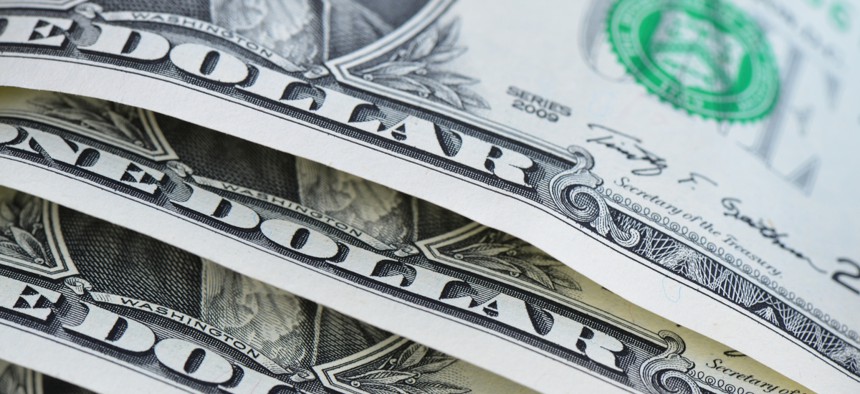July Brings New Minimum Wage Hikes for Some U.S. Cities and States

Two states and 16 local governments, including the District of Columbia, saw minimum wage increases as of July 1. Shutterstock

Connecting state and local government leaders
The highest minimum wage currently listed is in Emeryville, Calif., where businesses with more than 55 employees must pay at least $15.69 an hour.
Some minimum wage workers will start seeing pay hikes this week, as mandated increases went into effect in 16 cities and counties, as well as two states.
Ten of the places where workers got an increase as of July 1 are in California, where the liberal-leaning Economic Policy Institute notes the nation’s highest minimum wage exists in Emeryville, California. Businesses with at least 56 employees in the small Bay Area city must pay at least $15.69 an hour.
In Minneapolis, the increase to $11.25 an hour for larger employers and $10.25 for small businesses is part of a gradual shift to a $15 minimum wage by 2024. A representative of the local Chamber of Commerce—which has opposed mandatory minimum wage hikes across the country—told the Star Tribune the increases are a burden for small business owners, questioning if some will end up hiring fewer people.
But a city official told the newspaper that they are expecting the pay hikes to help the economy, as an estimated 71,000 low-income families will end up with more money to spend. Neighboring St. Paul is now contemplating its own, similar mandate, which a fast-food worker told a local TV station would help him support his family.
Last month, Massachusetts became the third state—after California and New York—to approve the $15 wage, which will be fully in effect by 2023. The number of governments adopting higher minimum wages has increased in recent years, as labor organizations have pushed the issue.
The two states where hikes went into effect this month are Maryland, where the wage rose to $10.10 and Oregon, which has different wages based on location, according to the Economic Policy Institute. Rural areas have a $10.50 minimum wage, while the Portland-area wage jumped to $12 an hour. The District of Columbia's minimum wage is now at $13.25
Across the nation, 21 states use the federal minimum wage of $7.25, which hasn’t changed since 2009. And 25 states bar local governments from acting to create their own pay floor.
Many studies, including one from 2017 looking at state increases between 1979 and 2016, have found that minimum wage increases don't effect the total number of available low-wage jobs.
But a University of Washington paper that same year found that hours decreased for low-income workers after the minimum wage hike in Seattle to $13 in 2016, which resulted in a collective drop in the amount employees were being paid. The wage is currently $15.45 an hour for larger companies, but less for smaller ones.
That study has been cited by opponents of minimum wage hikes, such as the Employment Policies Institute, which argued in this North Dakota-focused op-ed that it was unnecessary and would result in job losses. An effort to put a $15 minimum wage on the ballot in the state recently fizzled, as organizers weren’t able to collect enough signatures.
David Cooper, a senior economic analyst with the Economic Policy Institute, said researchers with his group have raised questions about the conclusions of the Seattle study. For example, he said the study showed a big spike in the number of jobs paying more than $19 an hour, which wasn’t emphasized but makes sense for a place where the unemployment rate is less than 3 percent.
“When you have such low unemployment you see employers start raising wages and that is going to mathematically reduce the number of jobs paying low wages and increase the number of jobs paying higher wages,” Cooper said.
Laura Maggi is the Managing Editor of Government Executive's Route Fifty and is based in Washington, D.C.

NEXT STORY: The Most Affordable Cities for Single Renters





